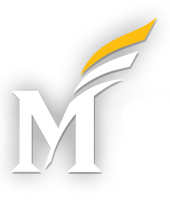Author(s): Destinee Biyoudi-Monthe
Mentor(s): Toni Farris, Honors College
AbstractAnd my topic is the discrimination women face in the workplace.
The direct and structural violence that women face in the workforce is not limited to the following: 1) not being able to speak in a meeting without being interrupted, 2) being expected to wear certain work attire, 3) being expected to always work hard or else look useless, 4) can’t negotiate pay grade resulting in the pay gap between men and women, and much more.
This oppression has been going on throughout history, and women want and deserve equal rights in the workplace just like their male colleagues.
However, change hasn’t been easy.
My conflict focuses on two parties: the larger patriarchal party which believes that men are superior to women and the non-misogynist party which believes that women and men should be treated equally.
Each of the parties forms their identities and views based on their idea of ingroup and outgroup.
Women want to feel meaning, security, recognition, and justice. This relates to their interpersonal values and social and physical basic needs for respect, survival, well-being, identity, and freedom.
And certain men may value consistency and fear that letting women have more ‘space’ and equal power will affect men in a negative way and decrease their positions in society and the benefits that come from that power imbalance. So men might need stability and continuation of their power, and assets, and keeping traditional ideologies
This relates to how the social boundaries that define each of the parties relate to gender ideology and social ideologies.
The parties favor their ingroup and dehumanize the outgroup by treating the outgroup as subhuman and having psychological dispositions. This leads to cognitive bias of the victim, persecutor, and hero mentality that each party has in relation to their duties to uphold their group’s ideologies.
This is a conflict map that gives a summary of the different parties and the connection between each of their identities, glories, traumas, and much more.
With this project, I wanted to bring to light the inequality women face in society and ways we can reduce this conflict to meet everyone’s needs. In order to do this, I planned on creating an art piece using crane origami.
When it comes to the actions I took for my project, the way I wanted to represent this conflict was by making a crane origami art of Rosie the Riveter. I chose Rosie the Riveter because this poster symbolizes women’s independence and women in the workforce which impacted women’s rights and boosted females to work during World War II. I wanted to make Rosie the Riveter relate to our current world, so I chose to make her wear a doctor’s lab coat with a stethoscope to represent the STEM (Science, Technology, Engineering, and Mathematics) field and how women and men aren’t treated the same in the STEM field even till present times. Related to how Rosie the Riveter boosted women’s morale to work in factories during World War II, and now it can boost women to work in the dominated male field of STEM. I chose not to color Rose the Riveter’s skin before I wanted to represent how the inequality women face in the workforce impacts all skin colors.
And this is a picture of my final art piece.
When it comes to the challenges and impact of the project, I planned and executed this project by myself. As a solo member, the challenges I faced while conducting this project were creating the art piece and coming up with an art design that represents gender inequality. My original idea consisted of making the entire art piece out of origami cranes, but due to my lack of art skills, I soon found out it is hard to make my dreams a reality. So I improvised and let the cranes represent the background while still keeping the same meaning of representing women’s empowerment. And letting Rosie the Riveter be in the center of the artwork.
Plus, it was challenging to stay unbias while conducting my research. As a woman, it was hard for me to not pick a side and remain unbias.
Thank you. If you have any questions, you can email me.
And these are my references.

One reply on “Gender Inequality in the Workplace”
Destinee,
Thank you for a meaningful conflict analysis that captures the application of theory to an important context.